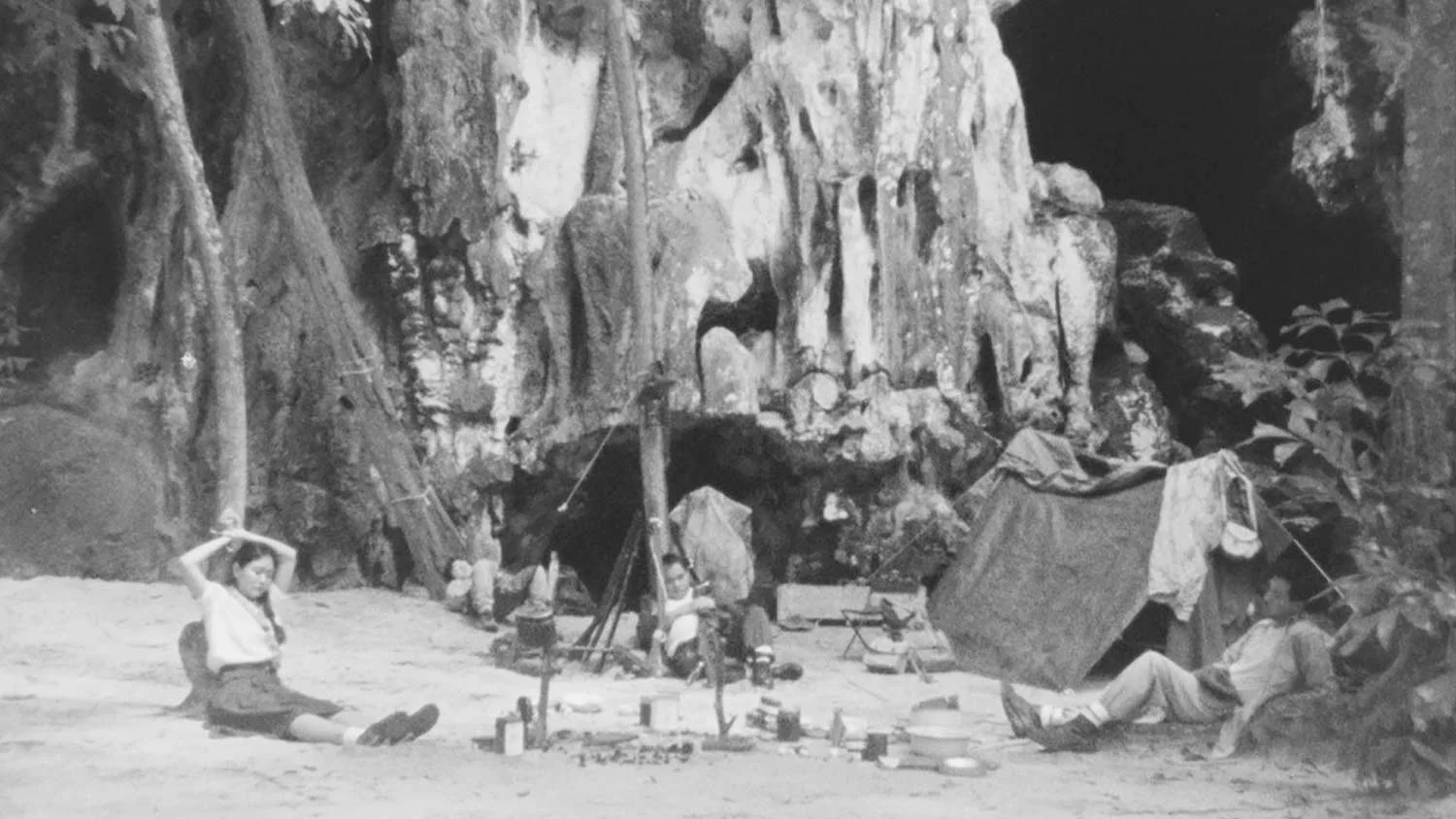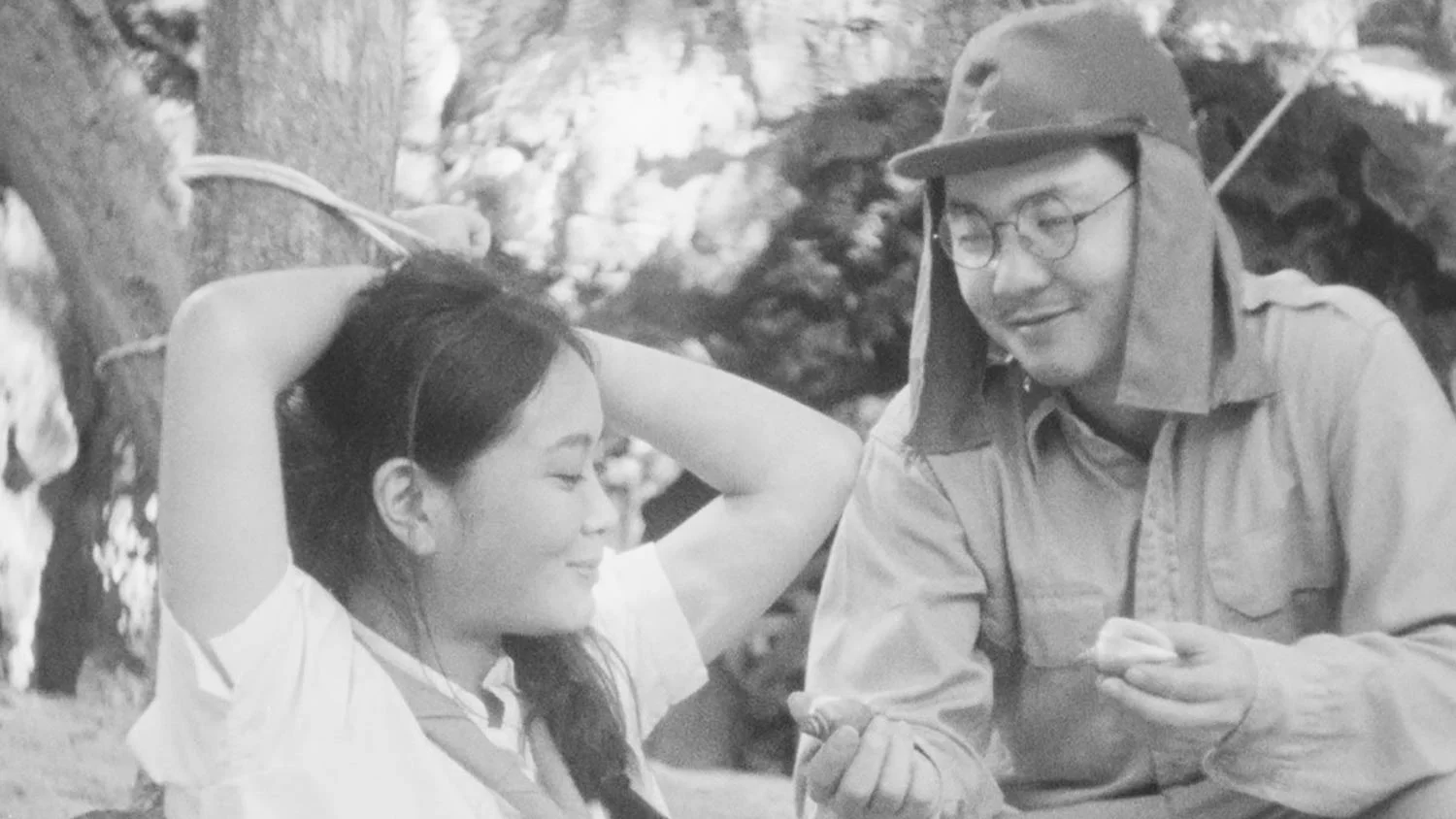An Interview with Chulayarnnon Siriphol, director of Birth of Golden Snail
By Emma Ting

Birth of Golden Snail by Chulayarnnon Siriphol no doubt raises many questions. How much of the film is based on the history of the Khao Kha Nab Nam caves and how much on fiction? Why 16mm? Most importantly, what does the Golden Snail mean?? The deeper one delves into the world of Birth of Golden Snail, or any other work by Chulayarnnon, the deeper one is sucked into this abyss of confusion.
Thankfully, Chulayarnnon Siriphol kindly agreed to an interview to address the questions surrounding Birth of Golden Snail.

EMMA TING: The film was originally intended to be projected onto the wall of a cave. However, it was banned from exhibition at the Thailand Biennale. Now that it’s being screened in a cinema at SGIFF, how does this alter the meaning of the work?
CHULAYARNNON SIRIPHOL: I think it changes the experience of the audience. In the beginning, the film was planned to be screened in the cave, so the audience had to go there by boat – it’s a cave on the island – get off the boat and go into the cave and see the film. The fact that the film is set in Khao Kha Nab Nam allows the audience to make the connection. If we change (the screening), the audience cannot get the experience of travelling to the cave. But, I think the audience can still get the feeling.
I tried to make the connection between the cave, the cinema and the beginning of humankind. In prehistory, people maybe lived in caves and the first time they could understand the moving image was when the lighting outside the cave hit the cave wall and they saw shadows. So when the film is shown in the cinema, it’s like we are going back to the beginning of humankind and the beginnings of film to ask the question, “What is film?”

ET: Could you talk about the symbolism of snails in the film?
CS: I found out that this kind of snail is called African Giant Snail. It was imported to Thailand by Japanese soldiers during WW2, so it’s an alien species. The soldiers brought this kind of snail as food during the war. After that, this species spread all over Thailand. Moreover, we have a Thai folktale about the snail; a woman gets pregnant and gives birth to a shell.1 After that, she finds that there is a small boy inside the shell. This was written more than 200 years ago.
Another important symbol is the gold. There’s a myth in Thailand that Japanese soldiers hid gold in the forest. Recently, I saw a programme on History Channel where people were digging for gold in the Philippines, and I found out it was a myth throughout Southeast Asia.2 Hence, I tried to make a connection between the folktale from 200 years ago, the myth during WW2, the alien species of snail, the prehistoric people and the form of early cinema.
ET: What was the intention behind the naval officer from Vanishing Horizon of the Sea making an appearance?
CS: Some characters in my previous short films appear in short films I plan to make in the future. So it’s a connection between the various worlds of my films. In Birth of Golden Snail, it’s not the complete story – it seems like something will happen after this. The story is not fixed, it can be expanded to other stories, it can be extended – it’s flexible.
Birth of Golden Snail is like the beginning of my childhood. Because the naval officer in Vanishing Horizon is related to my grandfather, so the woman in Birth of Golden Snail could be my mother and I could be the golden snail. It’s like a story about me and how I was born.

ET: Are personal references integral to your filmmaking process?
CS: Yes. For my previous work and this work, they are related to my personal memories. But I don’t want to show up so much that it becomes my personal story, so I try to make the connection with many public stories, to create something in the middle that everyone can join.
ET: Could you share a few words about the censorship of Birth of Golden Snail?
CS: I’m quite surprised that the film is about early cinema, about the birth of humans and at the same time, the government would like to shut down or censor the film. I try to give birth to the film but the government tries to make the abortion. So it’s related to the idea of the film itself.

ET: These days, many filmmakers strive to shoot and exhibit in the highest resolution possible. What does it mean to you to be shooting on analog film? CS: Today we have a wide variety of moving image material, 16mm, 35mm, VHS video tape, low res digital until 8K. For me, all of these can be a language to tell the history of moving images, and your intention, related to the content of the film. For example, everyone wants to shoot in 4K, 8K now because we believe the moving image can represent reality. If it’s super clear, very high resolution, it can represent the reality that “I can see”.
But I would like to challenge that by saying that we cannot see reality through the film. We see reality through the medium. For me, to select 16mm film is related to the history of the moving image and how people understand reality through film. In Birth of Golden Snail, we can see the textures – noise, dust, hair – of the film format. 100 years ago, when people first created film, they thought this was the reality. But now, we see textures that are not so clear – so the idea of reality as portrayed by the medium has changed. I don’t think 4K or 8K might fit all filmmakers. As a filmmaker, you have to think about what type of camera equipment or quality best fits your storytelling.
-Emma Ting
-Film stills from Birth of Golden Snail, dir. Chulayarnnon Siriphol, 2018.
-Photographs by Jeremy Chua